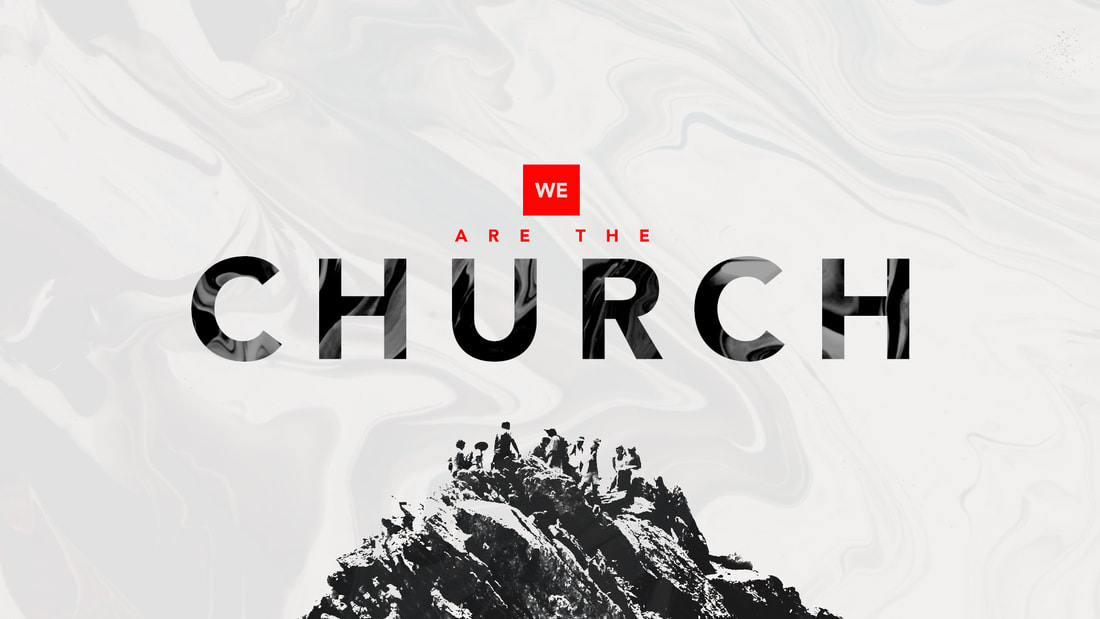Jamie Jean Schneider DommDigital Strategist, Social Media + Big Data, North American Division If you can track it, you can measure it. As a result, you can gain a better understanding of your audience and their behavior, helping you adapt your strategies to more effectively reach them. Taking the time to review the performance of your digital communications and platforms enables you to better understand what is working and what needs to be changed, which empowers you to shape your digital communications strategy based on data. In the long run, this will save both time and money while maximizing impact. Avoid data paralysisTime is valuable. Don’t get so caught up in the details of the data that you respond too late and miss an opportunity. Aim to stay ahead of the curve and be proactive instead of reactive in your strategies. Most ministries and churches do not have the luxury of a dedicated analytics team, but you don’t need to dive too deep to get valuable information about how your website and campaigns are performing. Since most ministries are new to digital communications and analytics, we’re going to stick to a high-level overview. Go back to those key performance indicators we discussed in the strong foundations section, and use those as a guide for what to track based on your ministry’s goals. Take the time to familiarize yourself with the terminology of the various data points. Most analytics tools define their terms within the platform. You can usually access these definitions by hovering your cursor over the question mark next to the data category. The data that is most important to your efforts will be:
Compare the information you find to the performance goals and metrics you established. Always look for areas of improvement and adjust accordingly. Communicate with everyone involved by:
Use trackable links (a.k.a. UTM codes)UTM codes are segments appended to a URL that enable data platforms like Google Analytics to record information about website visitors and traffic sources. This is vital for social media managers as it enables you to measure and prove social media success or, alternatively, identify problems and adjust your strategies. Creating trackable links is surprisingly easy to do and will give you valuable insights into how well your digital communications and ads are performing. What is a UTM code? UTM = Urchin Tracking Module Example: https://www.SDAdata.org/?&utm_campaign=DigitalGuide-2020&utm_source=Social-Media UTM codes can be used in links shared via:
Creating your own trackable links A trackable link has five building blocks:
Example: URL – https://www.sdadata.org/digital-discipleship-and-evangelism.html Campaign – DigitalGuide-2020 Source – Social-Media Put it all together using this formula: Regular link + ?&UTM + Campaign (what event, month, where, etc.) + &UTM + Source (channel/platform) Final result: https://www.sdadata.org/digital-discipleship-and-evangelism.html?&utm_campaign=DigitalGuide-2020&utm_source=Social-Media Be sure to always test your links! After you create your trackable link, be sure to test it to make sure it works. It can be very frustrating for your audience to receive digital content with a broken link. Website performance dataThe most common analytics tool for detailed website performance tracking is Google Analytics. Google Analytics is a free tool for monitoring where your visitors come from and understanding how they interact with your website. It’s easy to set up a free Google Analytics account. Most website hosting platforms offer easy-to-follow directions to get you started. Once you are set up, take the time to familiarize yourself with the tool and make it a habit to check your website’s analytics each month. Terms and definitions
Key metrics to monitor
Campaign performanceWhen you drill down deeper under campaigns, you can learn what aspects of a campaign performed the best by using unique UTM campaign names for the different components of your communications strategy. Google Analytics automatically picks up the campaign name and source from the tracking links. There is no need to do anything in Google Analytics to make this work! Just be consistent with the UTM codes you use, and be clear with your campaign and source names. Remember, prioritize. You don’t have time to track everything, nor do you need to! Once you have determined what you’re going to track to determine whether or not you’re reaching your goals, check performance monthly, and record your results in a way that enables you to see trends over time. Some analytics tools like Google Analytics allow you to create dashboards for easy access, while social media insights may require that you create your own charts and graphs. To learn more about Google Analytics, check out our beginner tutorial on SDAdata.org. Social media analytics or insightsMost social media platforms offer at least basic insights into the performance of a ministry’s account and who their audience is. Take the time to familiarize yourself with the analytics for your social media platforms and regularly check them to understand trends over time. Pay particular attention to:
Social advertising performance analyticsAfter you place your ads, don’t wait until the campaign is over to check performance. Monitor the ads closely to make changes and optimize as needed. Catch problems early on; otherwise, your money may go to waste. The great thing about social advertising is that you can edit campaigns at any time if they are not meeting your expectations. Make sure you understand what the numbers mean; most platforms have descriptions available in pop-ups next to the column head. Be sure to:
Some basic terminology you should know:
Track so that you can learnRemember, if you’re going to take the time to put together a campaign strategy, take the time to track its performance so you can be better informed next time. There’s no point in testing strategies without tracking your efforts. If you don’t learn from your campaign, you can’t improve the next one. Social media and digital marketing are both an art and a science. Use data to inform your intuition.
Jamie Jean Schneider DommDigital Strategist, Social Media + Big Data, North American Division What is a Facebook pixel? What are some of its practical uses for ministry?Simply put, a Facebook pixel is a small snippet of HTML code that is placed on your website for tracking purposes. It’s similar to Google Analytics but specifically for Facebook, enabling advertisers to target and re-target more effectively. Installing a pixel allows Facebook to track visitors and categorize them in custom audience groups. This information can help you develop more effective ads that appeal to a specific audience’s interests while saving money. It takes time, effort, and money to attract an audience, so once you have people actively engaging with your content, the next most effective step you can take for your ministry is to cultivate your relationship with your audience. Pixels are one way to re-engage your followers/visitors and ensure that your content is reaching them. Pixels can also help you customize the content they receive, taking into consideration their level of engagement and behavior and making sure your organization’s content stays relevant to their needs. For example, suppose you have a website that tackles multiple difficult topics, and one of the most visited areas focuses on “What happens when we die?” You can re-target visitors to that specific page with Facebook ads for videos, new content, free books, etc., all related to a biblical perspective on death. You can do the same for your prophecy, health, and Sabbath sections as well. Custom audience options for pixels include:
Click here for a step-by-step guide from Facebook to learn how to set up a Facebook pixel for tracking. Key custom and saved audiences for churchesOnce you have your pixel set up, you'll also want to set up custom audiences in your ad account so you can strategically target certain types of people who are more likely to respond to your content and invitations. Once these are set up, Facebook will dynamically build up these audiences for your use in targeting ad campaigns. These audiences are considered warm audiences because of their relationship to your page and are generally more cost efficient. You can also create lookalike audiences and colder or broader audiences for wider outreach efforts. Keep these saved in your Facebook Ads manager for easy access when setting up campaigns.
Jamie Jean Schneider DommDigital Strategist, Social Media + Big Data, North American Division Most local churches and ministries have limited budgets. To make the most of your limited ad dollars, build your advertising on top of your organic distribution mechanism. Paid ads are most successful when they are accompanied by strong digital distribution. They enable you to reach further than you can organically and to target specific groups of people for outreach efforts. Why spend any money when you can use the platforms for free? Social media platforms are businesses that need to make money; therefore, they limit unpaid reach. This means less than 5–10% of your fan base (depending on the platform) will naturally receive your posts in their news feed. You can counteract this by promoting key posts to reach more of your fan base and by placing ads to expand your reach to new audiences. To get started:
How much is appropriate to spend?A lot of people ask me, “How much does it cost to promote an event online?” But the beauty of social media ads is that the answer depends on what you can afford. Social media works very well for small budgets and non-profits. A little can go a long way, but it’s important to spend some money. As your confidence grows, and your familiarity with reaching your target audiences grows, you can increase your budget as needed. Ultimately, your budget depends on the size of your goals and your purpose. A small, local ministry may need to spend only $300 a year, whereas a nationwide campaign would need to spend at least $3,000 to create impact within a targeted audience. For all organizations, I recommend starting with a small ad budget and a clear objective that is easy to measure. This way you can learn and maximize your results as you grow. How can a small church or ministry fund their ad budget?Look for monies that can be redirected. Businesses that must balance their budgets or make a profit put most of their effort behind what is working. We should be just as shrewd. Too often, we pool our best resources and people into efforts with limited potential out of a misguided attempt to be fair or to meet accepted expectations. This will be different for every church or ministry, but it’s time to take a critical look at our programs. Determine your church’s strengths, and put all your efforts behind them. The Strength Finder (now CliftonStrengths) program operates on this premise for individuals and teams. We all love underdog or David and Goliath stories, where individuals or organizations overcome their weaknesses and beat the odds, but for most, thriving comes when we embrace what we are naturally good at. The underdog stories are typically outliers, and we should not operate under the assumption that we, too, are the exception to the rule. First, improve the functions required for your church’s operations, and put money behind keystone ministries with the most potential in the context of your membership and community. It might seem unfair to those ministries that don’t get as much support, but like the parable of the talents, you need to invest in the areas that are working the most effectively. Good stewardship means focusing on places where you can make an impact beyond day-to-day operations. Another option is to find individuals willing to fund social advertising as an outreach initiative or personal ministry. I personally fund and run my local church’s social media advertising and website hosting. Over time, our church leadership has learned the value and potential of using these digital technologies for a variety of purposes. Who should take responsibility for managing social advertising?Not every church is blessed with an experienced digital strategist, but this is an opportunity to allow a member with knowledge or interest in digital communications or marketing to develop their skills in a personal ministry that aligns with their abilities. If your church has staff, your communications lead can manage your ad account. This could also be a valuable skill for a younger member of your pastoral team to learn and take responsibility for. Either way, be sure to provide oversight so that expectations are clear, and the budget is respected. Do not place a single ad until you have a clear understanding of what you are trying to achieve and whom you are trying to reach. Types of adsAs of 2020, Facebook still has the most sophisticated social media advertising platform for small organizations. It enables detailed targeting for small budgets on Facebook, Instagram, and third-party websites. However, many of these ad types are also relevant to other platforms. The technologies and platforms may change, but these “types” will still be relevant, regardless of the platform. Choose the types of ads that align with the key performance indicators discussed in the strong foundations section of this guide. Here are the main types of ads that can be placed:
Basic targeting for social ads: |
Archives
August 2020
Categories
All
|
- Home
- BLOG
-
RESOURCES
-
RESOURCE MENU
>
- ADVENTIST IDENTITY GUIDELINES
- BIG DATA RESOURCES
- BRANDING, IMAGE & DESIGN RESOURCES
- CHURCH/MINISTRY SPECIFIC RESOURCES
- COPYRIGHT & TRADEMARK BASICS
- COURSES
- EMAIL RESOURCES
- GUIDANCE FOR HIRING SOCIAL MEDIA POSITIONS
- PODCASTS
- REPORTS & CASE STUDIES
- SOCIAL MEDIA RESOURCES
- (SOCIAL) VIDEO RESOURCES >
- TEXTING 4 CHURCHES
- TRACKING & ANALTYICS
- WATCH VIDEOS & TUTORIALS
- WEBSITE TIPS
- SOCIAL MEDIA GUIDELINES
-
RESOURCE MENU
>
- SEO
- Digital Discipleship & Evangelism
- COVID-19 RESOURCES
- eNEWSLETTER











 RSS Feed
RSS Feed